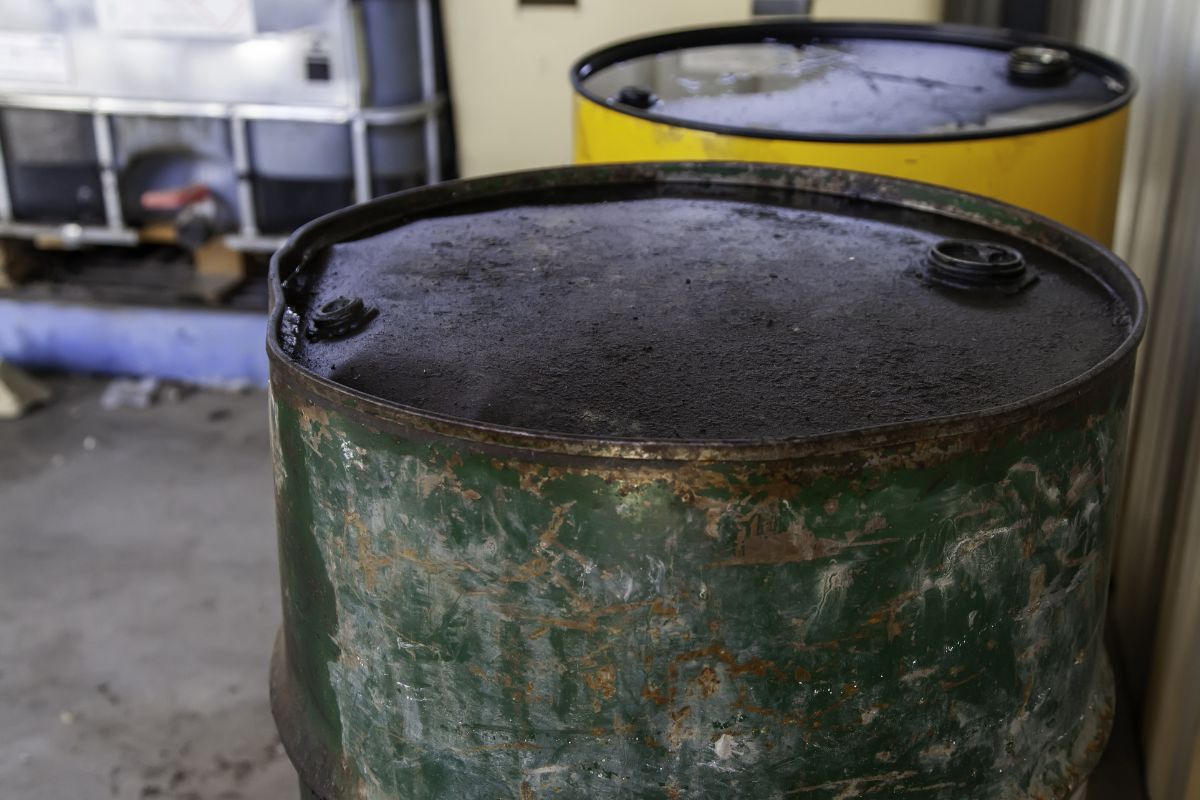The Real Cost of Equipment Downtime for Oilfield Operations
See How We're Different
Or Call Us: (281) 823-8262

In the high-stakes world of oilfield operations, equipment downtime is more than just an inconvenience—it’s a critical factor that can dramatically affect profitability and operational efficiency. Unplanned downtime disrupts production schedules, inflates costs, and can even jeopardize safety. Recent industry data reveals just how costly these interruptions have become, with some companies facing losses that reach into the millions annually. Understanding the real cost of equipment downtime is essential for operators aiming to optimize their maintenance strategies and safeguard their bottom line.
According to Tan Delta Systems, unplanned downtime costs oil and gas companies an average of $42 million every year. This staggering figure underscores the urgent need for effective reliability and maintenance programs that can minimize these costly interruptions.
Financial Impact of Downtime in Oilfield Operations
The financial repercussions of equipment failure and downtime in oilfield operations are profound. A recent survey by ABB reported that the average cost of unplanned downtime can soar to $125,000 per hour, highlighting the immense pressure on companies to maintain operational continuity. This hourly rate reflects not only lost production but also the costs associated with emergency repairs, labor, and potential contractual penalties.
Moreover, Insights Global revealed that equipment failures now cost facilities nearly $500,000 per hour—more than double the amount from just two years ago. This sharp increase signals that downtime is becoming an even more critical risk factor as oilfield operations grow more complex and expensive.
These figures emphasize why oilfield operators must invest in predictive maintenance and advanced monitoring technologies to detect potential failures before they escalate into costly shutdowns. By leveraging data analytics and machine learning, companies can not only anticipate equipment failures but also optimize their maintenance schedules, ultimately leading to reduced operational costs and increased productivity.
Unplanned Downtime Incidents: A Common Challenge
Downtime is not a rare occurrence in the oil and gas industry. A 2024 study published by Pumps & Systems found that 82% of companies experienced at least one unplanned downtime incident over the past three years. This prevalence highlights the ongoing challenge operators face in maintaining equipment reliability amid harsh operating conditions. Factors such as extreme weather, corrosive environments, and the aging of critical infrastructure contribute to the frequency of these incidents, making it imperative for companies to adopt a proactive stance on maintenance.
Given the frequency and cost of these incidents, it is clear that reactive maintenance strategies are no longer sufficient. Instead, companies are increasingly turning to predictive and preventative maintenance approaches to reduce downtime and improve asset availability. These strategies involve the use of IoT sensors and real-time data monitoring to track equipment health, allowing operators to make informed decisions about when to perform maintenance. Furthermore, the integration of digital twins—virtual replicas of physical assets—enables operators to simulate various scenarios and predict potential failures, thereby enhancing their operational resilience and minimizing financial losses associated with unplanned downtime.
Strategies to Mitigate Downtime Costs
One of the most effective ways to reduce downtime costs is through the adoption of non-OEM (Original Equipment Manufacturer) parts and components. A notable example comes from a major oilfield service drilling operator that managed to reduce equipment downtime by an impressive 93% by integrating non-OEM parts into their maintenance program. This case, documented by IRE Oil & Gas FZE, demonstrates how alternative sourcing strategies can enhance equipment reliability without compromising quality. The operator's success can be attributed to a meticulous selection process for non-OEM parts, ensuring that they met or exceeded the original specifications. This approach not only cut costs but also fostered a more resilient supply chain, allowing for quicker repairs and replacements when needed.
Additionally, implementing data-driven maintenance solutions enables operators to predict equipment failures before they occur. By leveraging real-time sensor data and advanced analytics, companies can schedule maintenance activities proactively, avoiding unexpected breakdowns and costly downtime. This shift towards a more analytical approach has led to the development of sophisticated algorithms that can analyze historical performance data, identify patterns, and forecast potential failures with remarkable accuracy. As a result, maintenance teams can prioritize their efforts on high-risk equipment, ensuring that resources are allocated efficiently and effectively.
Predictive Maintenance Market Growth
The growing recognition of predictive maintenance’s value is reflected in the expanding market for these technologies. The global oilfield predictive maintenance market was valued at approximately $2.8 billion in 2022 and is projected to grow at a compound annual growth rate (CAGR) of 8.5% from 2023 to 2030, according to Advanced Market Trend Reports. This growth trajectory indicates increasing investment in tools and systems designed to reduce unplanned downtime and optimize asset performance. Companies are not only investing in software solutions but also in training personnel to interpret data effectively, ensuring that the insights gained from predictive maintenance are actionable and lead to tangible improvements in operations.
Operators who adopt these technologies early stand to gain a significant competitive advantage by minimizing costly interruptions and extending the lifespan of critical equipment. Moreover, as the industry moves towards digital transformation, the integration of IoT (Internet of Things) devices into equipment is becoming more prevalent. These devices facilitate continuous monitoring and data collection, enabling a more granular understanding of equipment health. This comprehensive approach to asset management not only enhances operational efficiency but also aligns with broader sustainability goals by reducing waste and energy consumption associated with equipment failures.
Common Causes of Equipment Downtime in Oilfield Operations
Understanding the root causes of downtime is essential for developing effective mitigation strategies. Equipment failures can stem from a variety of issues, including mechanical wear, environmental conditions, and material degradation.
One significant source of failure in subsea operations involves damaged elastomeric seals, which are critical components in blowout preventer systems. A 2023 study published on arXiv identified leakages caused by these damaged seals as a major cause of subsea equipment failures. Such failures not only lead to costly downtime but also pose serious safety and environmental risks. The integrity of these seals is paramount, as they are designed to withstand extreme pressures and corrosive environments, making their maintenance and replacement a top priority for operators.
Addressing these vulnerabilities requires rigorous inspection regimes, high-quality replacement parts, and advanced materials designed to withstand the demanding subsea environment. Additionally, the implementation of predictive maintenance technologies can greatly enhance the ability to foresee potential failures before they occur. By utilizing data analytics and machine learning algorithms, operators can monitor the condition of equipment in real-time, allowing for timely interventions that can prevent unexpected downtimes and extend the lifespan of critical components.
Manufacturing Downtime Costs as a Benchmark
While oilfield operations have unique challenges, it is instructive to compare downtime costs with those in other industries. For instance, the average cost of downtime per minute in manufacturing reaches about $2,600, according to ZipDo Education Reports 2025. Although the oil and gas sector often experiences even higher costs per hour, this benchmark highlights the universal impact of equipment downtime across heavy industries and the importance of robust maintenance practices. In fact, the ripple effects of downtime can extend beyond immediate financial losses, affecting supply chains, customer satisfaction, and overall market competitiveness.
Moreover, the increasing reliance on automation and digital technologies in both manufacturing and oilfield operations underscores the need for a proactive approach to maintenance. As equipment becomes more interconnected, the potential for systemic failures grows, necessitating a shift towards integrated maintenance strategies that encompass not just individual machines but entire operational ecosystems. This holistic view can help organizations better allocate resources, streamline processes, and ultimately reduce the frequency and impact of equipment downtime.
The Path Forward: Embracing Reliability and Innovation
As oilfield operations continue to evolve, the importance of minimizing equipment downtime cannot be overstated. The financial stakes are enormous, and the operational risks are significant. Companies that prioritize reliability through predictive maintenance, innovative sourcing strategies, and advanced materials will be better positioned to navigate the challenges of modern oilfield environments. The integration of IoT (Internet of Things) technologies into equipment monitoring systems allows for real-time data collection and analysis, enabling operators to anticipate failures before they occur. This proactive approach not only saves money but also enhances the safety of personnel working in potentially hazardous conditions.
Investing in these areas not only reduces the risk of unplanned downtime but also enhances overall operational efficiency, safety, and profitability. With downtime costs climbing—sometimes reaching half a million dollars per hour—there is a clear imperative for oilfield operators to adopt forward-looking maintenance and reliability strategies. Furthermore, the adoption of advanced materials, such as composites and alloys designed to withstand extreme conditions, can significantly extend the lifespan of equipment. This not only reduces the frequency of repairs but also minimizes the environmental impact associated with equipment failures and replacements, aligning operational practices with sustainability goals.
In conclusion, the real cost of equipment downtime in oilfield operations is a multifaceted challenge that demands a proactive, data-driven approach. By leveraging the latest technologies and insights, the industry can significantly reduce downtime incidents and their associated costs, ensuring more resilient and profitable operations well into the future. Additionally, fostering a culture of continuous improvement and training among employees can further enhance the effectiveness of these strategies, as a well-informed workforce is crucial to implementing and maintaining innovative solutions in the field.










